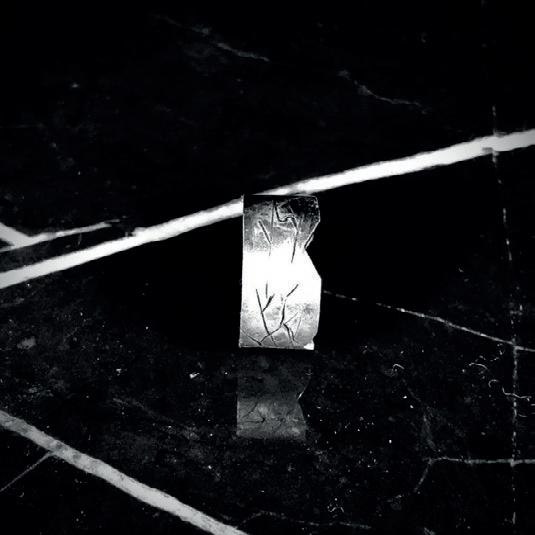
6 minute read
Extended Projects
JMcL
This year’s Lower Eighth students produced EPQs that covered a challenging and fascinatingly diverse range of topics and approaches.
Ben Swartzentruber Wide Band Engraved Ring
It was exciting to see an increasing number of students taking up the creative artefact option, including two creative writers – Tom Salter, who developed a historical novel set in twelfth century England, and Tom Lamont, who produced a series of inter-connected short stories in the fantasy genres – and four young film-makers – Elijah Patterson, Harry Hickles, Harry Hudson and Jack Rossiter – whose work explored horror, the impact of COVID on young people’s mental health, how colour can convey emotion and the style and themes of Martin Scorsese’s crime thrillers respectively (and thanks go to Filmsoc for letting us screen these films at the end of the spring term). Striking art projects came from Ben Swartzentruber, who designed, produced and marketed his own collection of jewellery, and Ryotaro Kusakari, who developed anime characters reflecting the street cultures of contemporary Tokyo. In one of this year’s most ambitious projects, Lucas Van Den Oever fused urban planning with map-making to design Naga, a new city in The Philippines, complete with its own crest, and districts named after pivotal figures in Filipino history and culture. This year’s dissertations were no less impressive, covering a broad field. Innovative technology was a popular topic: Julian Amore and Will SauvelPorter looked at the role that AI could (but perhaps shouldn’t) play in the criminal justice system, while Daniel Zubarev assessed its impact on employment in the US transport industry. Freddie Dehmel looked at cryptocurrencies, and Caspar Robertson analysed whether blockchain technology could foster financial inclusion. Also in the field of Economics, Wentao Huang explored whether a Universal Basic Income could successfully tackle poverty and inequality, Christian Bulmer analysed models of market efficiency to discover whether or not George Soros’s suggestion that market prices are always wrong was actually right, and Alexandre Veccchioli considered who or what should be held to account for the 2008 Financial Crisis.
The issue of responsibility was also at the heart of several other projects, including Alex Gong’s analysis of the Mati Wildfires in Greece, which used blame ethics to work out where the culpability for this catastrophe lies, and Josh Thomas’s assessment of who is responsible for dealing with the Great Pacific Garbage Patch, and how they might go about it. Carleo Zhu also looked at intriguing solutions to ecological problems, evaluating the potential in the UK for generating energy from municipal waste. In Philosophy, Daniel Hou assessed which conditions, if any, made it permissible to kill a healthy human being, and Varun Vashisht’s deeply humane and compassionate project considered whether conjoined twins should be separated, and what this tells us about how we define and value human lives. Psychology projects included Shivan Arora’s consideration of how language might influence thought, exploring the evidence for and against the SapirWhorf hypothesis, while Victor Lazkani evaluated the effectiveness of different ways of treating depression and Will Cronshaw analysed whether grief affects everyone in a similar way, or whether it changes according to age, faith, culture or social relationships. Hayden Hunt’s project lay on the cusp between psychology, anthropology and aesthetics, and covered a huge range of ideas, including physiology, rhythm, religious ritual and auto-tune, in his investigation of why humans find pleasure in music.



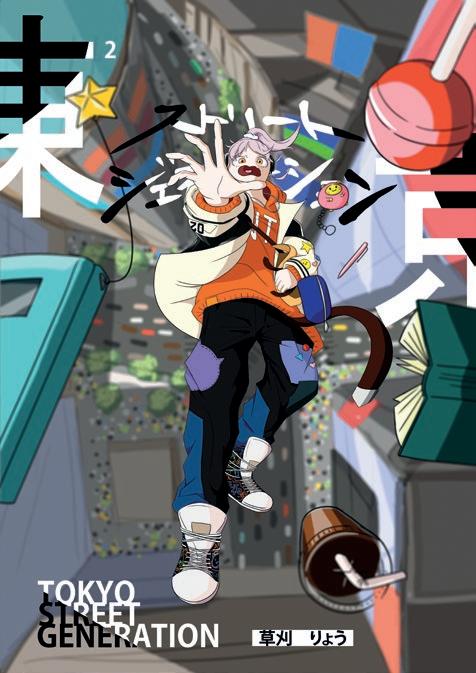
Ryo Kusakari final artwork
American society, institutions and history came under particular scrutiny this year. Racial politics were at the heart of George Norris’s critique of the devastating impact mass incarceration has had on homelessness in AfricanAmerican communities in California, as well as pivotal to Alex Pama’s assessment of how environmental factors contribute to success in the NBA. Noah Leach took a radical hatchet to the US prison system, assessing whether or not it is actually fit for purpose, Victor Shao produced an extensive exploration of the country’s income inequality, and Noah Pavell analysed whether responses to US school shootings actually do more harm than good. American belief systems, whether faith-based or ideological, also generated some fascinating projects, including Max Melton’s examination of Scientology’s success in the States, and Corry Traynor’s astute assessment of the reasons for the increased polarisation of the US Senate. Felix O’Brien explored whether Teddy Roosevelt’s hunting contradicted his environmentalism, not only giving an illuminating account of American myths of landscape and masculinity, but also debating whether historical figures should be judged by contemporary moral and ethical standards. ➦
History projects included explorations of earlier eras, such as Alex Perkins’s assessment of Viking rule over England in the 11th century, and Edward Zhang’s re-assessment of the Ming Treasure Voyages of the 15th century, often regarded by Western historians as proto-colonial in nature, a claim Edward contested convincingly. Paul Emmett and Nicholas Martin straddled 200 years of European industrial relations, with Paul assessing to what extent high wages were a contributory factor in the Industrial Revolution, and Nicholas investigating the causes of Italy’s ‘L’autunno caldo’ in 1969. Post-war British history was the focus of Harry Mugisha’s study of the Attlee government’s role in forming the UK’s post-war consensus, while Yusuf Kundgold analysed the impact of the Falklands War on Mrs Thatcher’s premiership. Leo Pavell looked ahead, evaluating the strengths and possible weaknesses of the British Navy should a conflict develop in the Taiwan Strait, and Luke Buckland considered the impact of the National Security Law on post-handover Hong Kong.
This year’s science-based projects often focussed on issues linked to medicine: Sean Chong analysed how CRISPR might change the way we tackle cancer, Alex Apkarian considered whether genes should be patented, and Nao Matsushita assessed whether it’s better to invest in trying to find a cure for Type 1 Diabetes, or in improving ways of treating it. Aiken Lau’s ingenious project, ‘The Parasite Puppet-Master’, analysed whether toxoplasma gondii re-wires the brains of its hosts in order to make them more receptive, using his family’s pet cat, Ares, as a case study. Ares, who has established himself as the dominant organism in the Lau family home, despite ‘having the personality and reflexes of a loaf of bread’ (according to Aiken), made a guest appearance during Aiken’s EPQ presentation, allowing us to witness the puppetmaster at work as he duly charmed the entire audience. Even without Ares’s scene-stealing cameo, the presentations would have been exciting enough, given that it was the first time they had taken place for three years, after COVID restrictions scuppered the presentations in 2020 and 2021. Watching the students

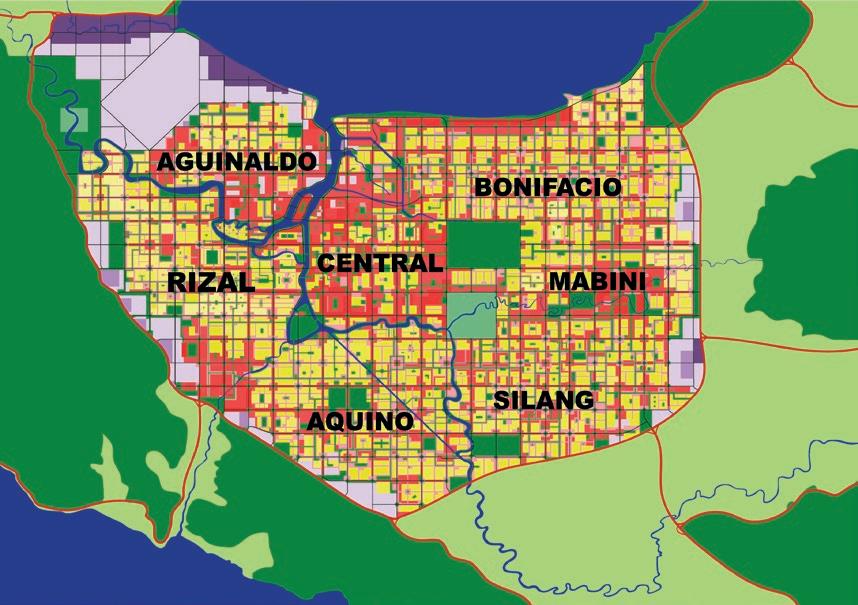
Lucas van den Oever – Boroughs and Final Map

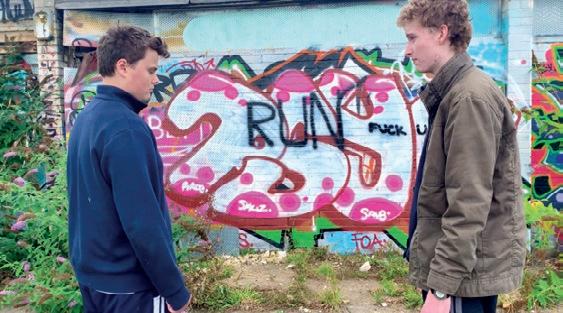
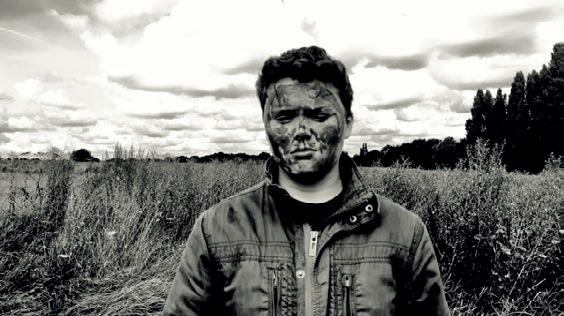
For a Reason TED-talking their peers through their achievements and discoveries was truly inspirational, and a welcome return to normality.
EPQs are independent projects, but the relationship between the student and their tutor-assessor is often integral to the student’s enjoyment of the experience, as well as the project’s success. Many thanks are therefore due to all the teachers who supervised this year’s EPQs: it was genuinely touching to read so many students’ acknowledgements of their support, inspiration and encouragement. Thanks are also due to Mrs Cummings and the librarians for all their help and guidance, and for introducing the students to some tips and shortcuts for navigating the labyrinth of online research resources. Copies of each year’s EPQs are deposited in the Kayton Library for reference, so if you’d like to read any of the EPQs described here in full, that’s where to look. ❚
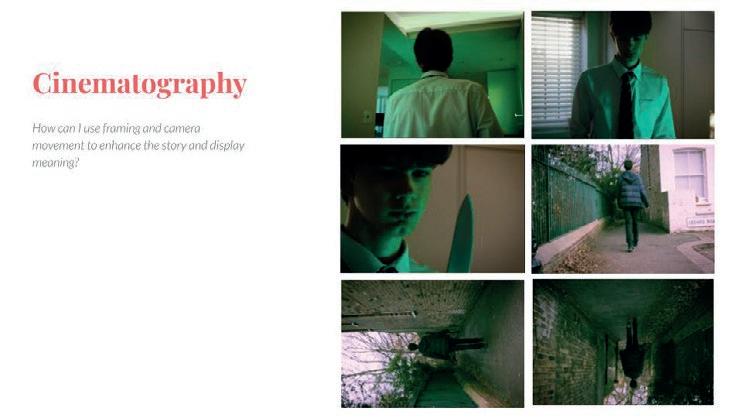
Hudson











